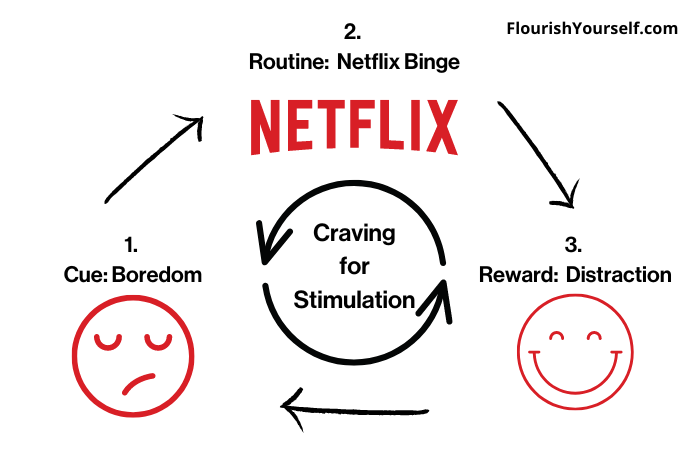
Do you have a bad habit that’s ruining your life? Maybe it’s overindulging on Netflix? Smoking? Or not drinking enough water? For those that answered yes, you are not alone! If you answered no, I admire your self-discipline and hope you can still gain something new.
It turns out that our brains can’t distinguish between bad and good habits.
Starting a new and positive habit can feel exciting, rewarding, and an excellent motivator for getting out of our comfort zones. But sometimes, maintaining a good routine can be challenging, especially when it seems our lives often “get in the way” of making a habit stick for the long haul. So, how do we build and prioritize healthy habits even when it seems impossible?

First, let’s learn about the part of the brain responsible for habit formation, the basal ganglia. The basal ganglia is an organ of clusters of neurons and play a critical role in building habits. This organ helps us do basic tasks like brushing our teeth, tying our shoes, or driving a car without much extra thought. In other words, the basal ganglia helps us save energy and time to devote more time to more complex tasks.
Now that we know where habits are formed let’s talk about how we can actively shape them for positive self-development.
In his book, The Power of Habit, author Charles Duhigg explains that habits comprise a three-step loop system: the cue, the routine, and the reward. After the routine ends, the reward follows, signaling the end of the habit/loop. In short, our brains look for a cue, or stimulus, to choose a learned pattern, followed by a physical, mental, or emotional routine and a reward to signal the end of the loop.

For instance, my bad habit (see above image) begins when I crave stimulation. My feelings of boredom signal that the cue has started. Next, I begin my routine of binge-watching shows on Netflix. Finally, when I feel distracted and entertained, I know I’ve reached my reward, and the loop is complete.
According to Duhigg, we can’t extinguish a bad habit, but we can change it! So, how can we convert a bad habit into a good one?
You can start by finding a new positive habit. Maybe it’s reading more or spending less time on your screen? In my case, I decided that whenever I felt bored, I would move more and replace overindulging on Netflix with yoga practice. Now my habit loop looks like the image below.

Whenever I feel bored (cue), I grab my yoga gear and start my practice (routine), then when I feel stretched and energized, I know I’ve reached my (reward).
“Over time, this loop—cue, routine, reward; cue, routine, reward—becomes more and more automatic.”
Charles Duhigg
After you have decided to prioritize your new habit, the first step to creating lifelong practices is to be patient with yourself. Starting and maintaining a new habit requires a lot of patience and time. Remember, good habit building is a journey and not a race! Our lives thrive on habits, and it is in our best interest to persevere and embrace the experience. If you fail, remember to fail forward and be kind toyourself. Give yourself permission and time to learn from your setback and try again. In time, you will adjust and form new positive habits!
